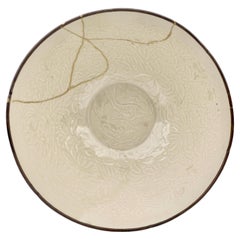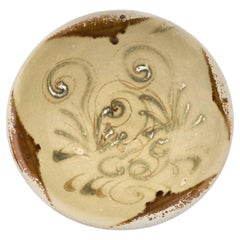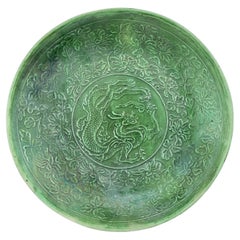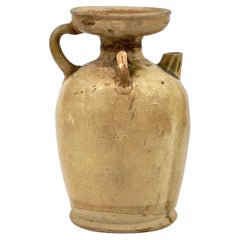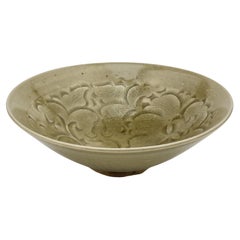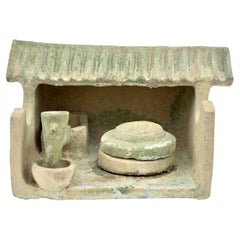15th Century and Earlier Asian Art and Furniture
Chinese Ming Antique 15th Century and Earlier Asian Art and Furniture
Ceramic, Porcelain
Chinese Tang Antique 15th Century and Earlier Asian Art and Furniture
Pottery
Chinese Ming Antique 15th Century and Earlier Asian Art and Furniture
Ceramic, Stoneware
Chinese Tang Antique 15th Century and Earlier Asian Art and Furniture
Pottery, Stoneware
Chinese Ming Antique 15th Century and Earlier Asian Art and Furniture
Celadon
Chinese Han Antique 15th Century and Earlier Asian Art and Furniture
Earthenware, Pottery
Chinese Tang Antique 15th Century and Earlier Asian Art and Furniture
Pottery
Chinese Tang Antique 15th Century and Earlier Asian Art and Furniture
Pottery
Chinese Tang Antique 15th Century and Earlier Asian Art and Furniture
Pottery
Chinese Tang Antique 15th Century and Earlier Asian Art and Furniture
Pottery
Chinese Tang Antique 15th Century and Earlier Asian Art and Furniture
Pottery
Chinese Han Antique 15th Century and Earlier Asian Art and Furniture
Celadon, Stoneware
Egyptian Egyptian Antique 15th Century and Earlier Asian Art and Furniture
Stone
Chinese Tang Antique 15th Century and Earlier Asian Art and Furniture
Earthenware, Pottery
Antique 15th Century and Earlier Asian Art and Furniture
Ceramic
Chinese Tang Antique 15th Century and Earlier Asian Art and Furniture
Stone, Limestone
Javanese Folk Art Antique 15th Century and Earlier Asian Art and Furniture
Terracotta
Chinese Antique 15th Century and Earlier Asian Art and Furniture
Earthenware
Egyptian Egyptian Antique 15th Century and Earlier Asian Art and Furniture
Stone
Egyptian Egyptian Antique 15th Century and Earlier Asian Art and Furniture
Stone
Greek Classical Greek Antique 15th Century and Earlier Asian Art and Furniture
Pottery
Chinese Ming Antique 15th Century and Earlier Asian Art and Furniture
Ceramic
Thai Antique 15th Century and Earlier Asian Art and Furniture
Pottery
Egyptian Egyptian Antique 15th Century and Earlier Asian Art and Furniture
Stone
Chinese Han Antique 15th Century and Earlier Asian Art and Furniture
Stoneware
Egyptian Egyptian Antique 15th Century and Earlier Asian Art and Furniture
Stone
Chinese Antique 15th Century and Earlier Asian Art and Furniture
Pottery
Chinese Han Antique 15th Century and Earlier Asian Art and Furniture
Pottery
Uruguayan Antique 15th Century and Earlier Asian Art and Furniture
Amethyst, Crystal, Other
Korean Archaistic Antique 15th Century and Earlier Asian Art and Furniture
Ceramic
Chinese Ming Antique 15th Century and Earlier Asian Art and Furniture
Celadon
Cambodian Antique 15th Century and Earlier Asian Art and Furniture
Bronze
Greek Classical Greek Antique 15th Century and Earlier Asian Art and Furniture
Pottery
Chinese Ming Antique 15th Century and Earlier Asian Art and Furniture
Pottery
Chinese Tang Antique 15th Century and Earlier Asian Art and Furniture
Pottery
Chinese Tang Antique 15th Century and Earlier Asian Art and Furniture
Pottery
Egyptian Classical Roman Antique 15th Century and Earlier Asian Art and Furniture
Gesso, Linen
Chinese Chinese Export Antique 15th Century and Earlier Asian Art and Furniture
Porcelain
Chinese Han Antique 15th Century and Earlier Asian Art and Furniture
Limestone
Chinese Ming Antique 15th Century and Earlier Asian Art and Furniture
Celadon
Japanese Japonisme Antique 15th Century and Earlier Asian Art and Furniture
Stone
Cambodian Antique 15th Century and Earlier Asian Art and Furniture
Pottery
Chinese Antique 15th Century and Earlier Asian Art and Furniture
Pottery
Chinese Antique 15th Century and Earlier Asian Art and Furniture
Pottery
Chinese Han Antique 15th Century and Earlier Asian Art and Furniture
Stoneware
Chinese Antique 15th Century and Earlier Asian Art and Furniture
Pottery
Chinese Ming Antique 15th Century and Earlier Asian Art and Furniture
Pottery
Japanese Japonisme Antique 15th Century and Earlier Asian Art and Furniture
Stone
Chinese Other Antique 15th Century and Earlier Asian Art and Furniture
Terracotta
Chinese Chinese Export Antique 15th Century and Earlier Asian Art and Furniture
Terracotta
Persian Antique 15th Century and Earlier Asian Art and Furniture
Bronze
Chinese Antique 15th Century and Earlier Asian Art and Furniture
Pottery
Chinese Han Antique 15th Century and Earlier Asian Art and Furniture
Earthenware
Persian Antique 15th Century and Earlier Asian Art and Furniture
Bronze
Chinese Other Antique 15th Century and Earlier Asian Art and Furniture
Pottery
Chinese Han Antique 15th Century and Earlier Asian Art and Furniture
Earthenware
Cambodian Antique 15th Century and Earlier Asian Art and Furniture
Bronze
Chinese Ming Antique 15th Century and Earlier Asian Art and Furniture
Ceramic, Stoneware
Read More
Chicago’s Pagoda Red Has a Spirited Mix of Asian Antiques and Bold New Art
For 25 years, gallerist Betsy Nathan has leveraged her keen eye and key connections to bring a unique selection of rare finds to the market.
In L.A., Gallerist JF Chen Has Long Championed Eclectic Blue-Chip Design
Now working alongside his daughter Bianca, dealer Joel Chen has presented a most covetable array of antiques, art and contemporary creations for more than 40 years.
12 Calming Spaces Inspired by Japanese Design
From cherry-blossom-adorned walls paired with glamorous lighting to wood-paneled ceilings above checkerboard-patterned chairs, these 12 spaces seamlessly blend Eastern and Western aesthetics.
Rodrigo Rivero Lake’s Mexico City Showroom Is a Museum-Worthy Trove of Spanish Colonial and Asian Antiques
The dealer and curator has spent the past 50 years amassing a collection of exceptional art, furniture and architectural elements that trace the cultural influence of the Spanish empire from Europe to the Americas and beyond.
16 Refined Asian-Inspired Interiors
These spaces exemplify how Eastern elements elevate a home's decor.
